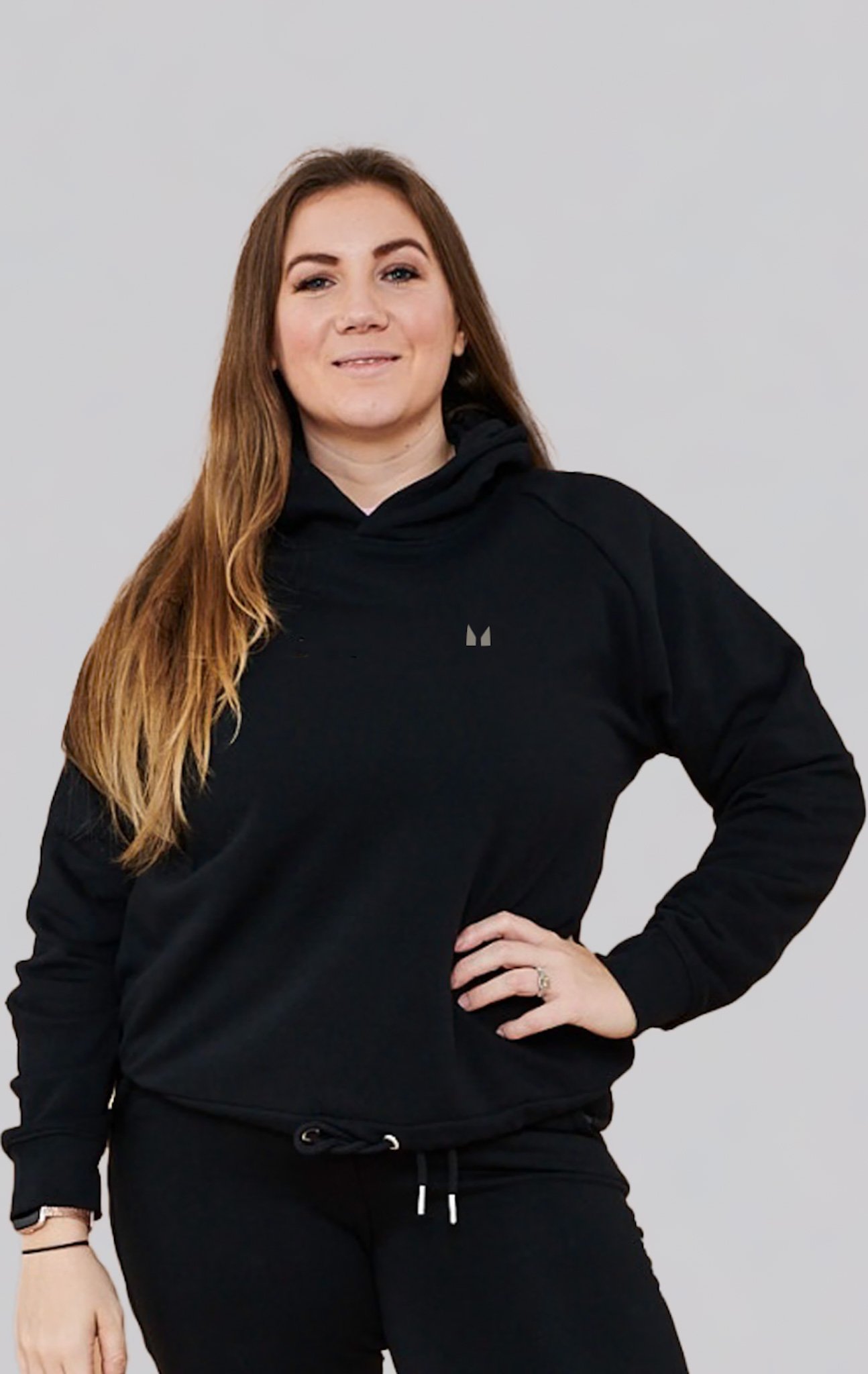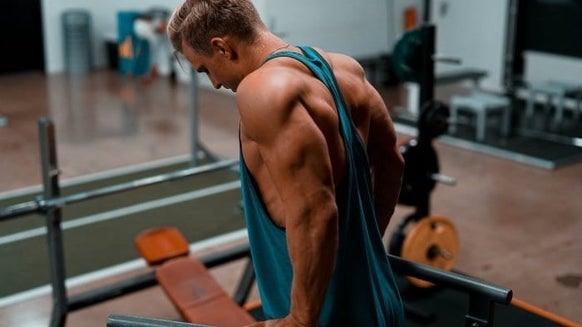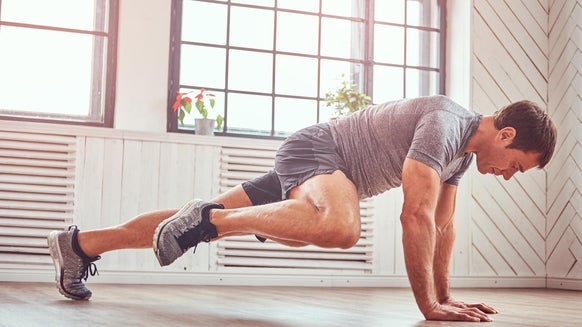Strength Training For Women | A Beginner’s Guide
Strength Training for Women
Benefits of Weightlifting and Strength Training:
1. Improved fat loss
2. More muscle, means more calories burnt
3. Stress relief
4. Increased energy
5. Healthy heart and bones
6. Reduced risk of injury
Strength Training For Women
Lower Body
Weight training for your lower body means pretty much everything below the waist and can range from squats to deadlifts. There are so many different ways to train with weights that you'll never get bored with the same old routine. For some inspiration to get you started, here are some lower body favourites.
Hip Hinge
Example Exercise: Glute Bridge
Targeting: Glutes (butt muscles), calves, and hamstrings
How To - begin with just the barbell
- Roll a bar onto your hips while lying on your back with your knees bent. You might want to use a foam pad around the bar, and a mat on the floor for comfort.
- Place your feet flat on the floor with your heels close to your butt. If you feel your hamstrings working in the top position, then bring your feet slightly closer to your bum.
- Start with your feet shoulder-width and adjust from there. As everyone is built slightly differently, some people will feel it better with a wider stance, and some with a narrower one — trial and error is the best approach here. You may also want to try comparing how it feels with your toes pointing forwards, or out at 45 degrees.
- From here, tense your abs and squeeze your glutes. Now push as hard as you can through your heels and lift the bar up with your hips until your hips are fully extended and your shin is around vertical. Make sure you squeeze your glutes as hard as you can at the top, rather than using your lower back and over-arching.
- Do the reverse to slowly lower the bar back to the ground while staying in control.
- Deadlift
- Kettlebell Swing
- Cable Pull-through
Squats and Single led variations
Example Exercise: Goblet Squat
- Hold the dumbbell with your palms facing up (hence the ‘goblet’ part of the name), with your feet around shoulder-width apart and your chest forward, shoulders back.
- Keeping a straight back, bend your knees and move your bum back and down, so your weight is on your heels. Aim to get your bum as close to the ground as possible. If you have a logo on your T-shirt, it should be parallel to the wall, not the floor (i.e. keep your chest facing forward).
- Tense your abs and push back up through your heels to your start position.
- Bulgarian/rear-foot-elevated split squat
- Reverse lunge
- Walking lunge
- High step/reverse lunge combo

Upper Body
As we mentioned before, strength training for women and men includes working the upper body as well as the lower body. There are also many workouts for training your upper body depending on which muscles you wish to target. The trick is to start with light weights until you've cracked the movement before building up to something heavier to really test your strength. Here are some exercises to help you.
Horizontal Pull
Example Exercise: 1-Arm Row
Exercise Technique
- With any one-sided exercise, such as the 1-Arm Row, use your weaker side first. So if you’re right-handed, use your left hand first. We’ll use a right-handed person as the example here.
- Place your right knee on a bench, directly below your right hip, and your right hand directly below your right shoulder. Now place your left foot on the floor out away from the bench.
- Pick up a dumbbell with your left hand and pull your elbow up to the ceiling, keeping it close to your body, instead of ‘flaring’ it out to the side. Squeeze the muscle around your left shoulder blade, and then return the dumbbell back to the starting position (at arm’s length), while staying in control of the movement.
- Seated row
- Inverted row
- Bent-over row
Vertical Pull
Example Exercise: Wide-Grip Lat Pulldown
Exercise Technique
- This exercise is for a weights machine where you have a bar to pull down on while seated.
- Get a solid grip on the bar with your hands outside shoulder width and place your legs under the cushioned support with your feet flat on the floor.
- Keeping your body in an upright position pinching your shoulders together, pull the bar towards your sternum. Focus on getting your elbows down towards your hips and squeeze your lats. Return the bar to the starting position with your arms fully extended, while staying in control.
- Band-assisted pull-ups
- Chin-ups
Chest work
Horizontal Push
Example Exercise: Incline Press-Up
Use either step, a bench, or a bar in a squat rack or Smith Machine. The higher the surface the easier the exercise, and the lower the surface the harder it’ll be.
Exercise Technique
- Line your sternum (breastbone) up with the edge of the surface, place your hands on it around shoulder-width apart, and walk your feet out until your body is in a straight line from your head to heels.
- Keeping your elbows tucked in towards your body at around 45 degrees (rather than flared out to the side), push through the heels of your hands until your arms are fully extended. Pause briefly at the top and return — while staying in control — to the start position.
- Dumbbell bench press
- Dumbbell flyes
Vertical Push
Example exercise: Seated Dumbbell Shoulder Press
Exercise Technique
- Sit on a bench with the back completely upright, supporting your back, and place your feet just outside shoulder-width for stability.
- Starting with a dumbbell in each hand push straight up, directly above your shoulders. Pause briefly at the top and return — while staying in control — to the start position.
- Shoulder press machine
- Barbell shoulder press
Conditioning
Example exercises: Farmer’s Walks
Exercise Technique
- Pick up a relatively heavy dumbbell in each hand and stand tall.
- Hold the dumbbells with a tight grip and slightly out from your sides, so you’re not resting them against yourself (this takes some of the strain off your core), and walk. Put the dumbbells down at the end or at any point you feel like you might drop them (for example, if your grip starts to tire).
- Battle ropes
- Sled/prowler pulls/pushes
Building Core Strength
Example exercise: RKC Plank
Exercise Technique
- Get into position by lying on your front and then pushing up onto your elbows and balls of your feet. Next, squeeze your glutes (this will shorten your abdominals so they contract harder), and your thighs.
- Imagine pulling your elbows and toes together and hold like this for the most intense plank you’ve ever done. This is much more about how hard you squeeze rather than holding it for a long time — think of it as more of a sprint than a marathon.
TIP: Try not to fall flat on your face when finished!
- Pallof press
- Swiss ball ab rollout
Supplements
One thing that comes into question alongside strength/weight training is can achieve some success without using supplements? The short answer is yes if you are fueling your body correctly with your current food intake, However they can definitely help you with your goals — especially when convenience is high on your priority list. When thinking about strength training for women, the one that’ll have the biggest effect on your goals will be whey protein. This is because protein is the building block for muscles, so if you want stronger and/or larger muscles you need to make sure you are fuelling them with the right nutrients to promote change. When strength training the demand for protein increases which means so does you need to consume it, therefore a lot of people choose to supplement with protein shakes or bars to help reach the optimal protein consumption.
Take Home Message







